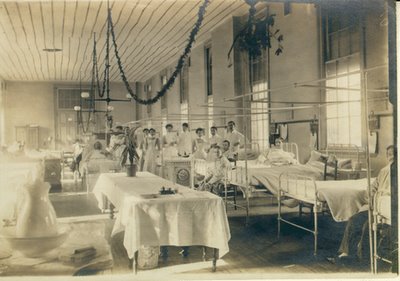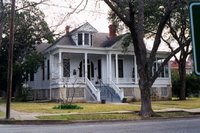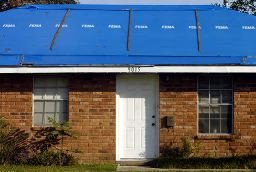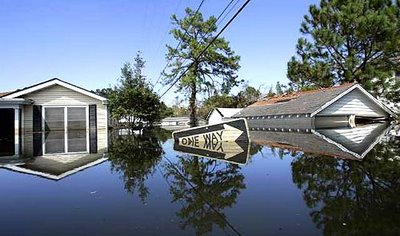Don't Know Much About Hydrology
 The Corps of Engineers is still engaging in ass-covering by proposing that most of New Orleans flooded due to overtopping and not levee breaches.
The Corps of Engineers is still engaging in ass-covering by proposing that most of New Orleans flooded due to overtopping and not levee breaches.
While the Corps of Engineers contends that most of the damage from floods in the New Orleans area resulted from water topping levees, an analyst at Louisiana State University says that 87 percent of the flooding in the area was because of levee breaches and only 13 percent was from water flowing over the tops of the levees.This excuse will hold water about as much as Corps of Engineers levees. It doesn't take a hydrologist to figure out that levee breaches flooded parts of the city that would not have flooded had the breaches not occured. The fact of the matter is that some of worst flooded areas of the city, such as Lakeview and Gentilly, were flooded by levees that were breached and NOT overtopped. Even Congress was take aback.
His remarks stunned some members of the committee who have attributed much of the flooding, particularly in Lakeview, Gentilly, Old Metairie and many areas in Orleans Parish and downtown, to breaches in the 17th Street and London Avenue outfall canals, which were not overtopped.
(snip)Ivor van Heerden, assistant director of the LSU Hurricane Center and a member of the Team Louisiana group that has been probing levee failures independent of the corps, said the corps' presentation is wrong.
"The corps seems to have taken a step backward and seems to have taken the approach of denial, once again," van Heerden said.
Breaches caused by overtopping must be counted as breaches and as faulty design by the corps, Van Heerden said.
"It's design, design, design," he said.
Van Heerden said storm surge models show 16 percent of the volume of water in the Orleans metro bowl, basically the area west of the Industrial Canal, was from overtopping, and the rest from breaches. Breaches were responsible for 92 percent of the flood water volume in St. Bernard Parish and 65 percent in eastern New Orleans, he said.
Overtopping would have occurred for up to three hours the day of the storm, totaling nowhere near the amount of sustained water flowing in because of breaches, he said.
More:
Rogers said the corps' focus on overtopping and levee height misses the point.
"When you build something to a certain level, and not the maximum level, then it has to be Category 3 survivable," Rogers said. "It's not just about Category 3 height, it's about Category 3 survivable."
To sum up the Corps response; sure we screwed up but our big screw-up didn't do as much damage as our little screw-up.

































